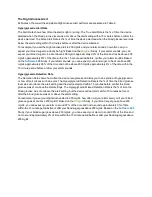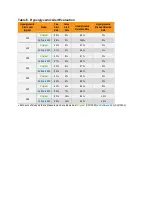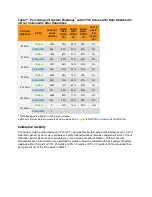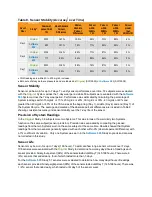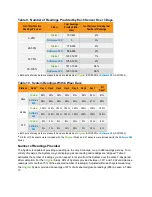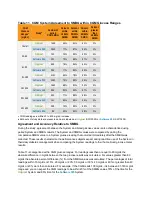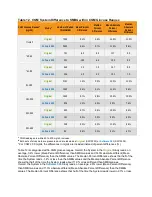
Table 8. Sensor Stability (Accuracy
1
over Time)
Day of
Wear
Study
2
Number of
paired CGM-
YSI
Mean Absolute
Percent
Differences
Median
Absolute
Percent
Differences
Percent
within
15/15%
YSI
Percent
within
20/20%
YSI
Percent
within
30/30%
YSI
Percent
greater
than
40/40% YSI
Day 1
Original
3023
16.7%
13.2%
59%
71%
86%
6%
Software
505
680
10.7%
7.9%
77%
84%
96%
2%
Day 4
Original
3108
11.4%
8.2%
77%
87%
95%
2%
Software
505
777
8.0%
6.4%
89%
96%
99%
0%
Day 7
Original
3021
11.9%
8.9%
76%
87%
95%
2%
Software
505
806
8.5%
7.2%
90%
97%
99%
0%
1
CGM readings are within 40 to 400 mg/dL, inclusive.
2
Both sets of study data are presented and are labeled as
Original
(SW10050) or
Software 505
(SW10505).
Sensor Stability
Sensors can be worn for up to 7 days. To verify sensor performance over time, 72 subjects were evaluated
with the
Original
System across the 7-day wear period while 50 subjects were evaluated with the
Software
505
System across the 7-day wear period. Performance was estimated by calculating the percentage of
System readings within 15 mg/dL or 15%, 20 mg/dL or 20%, 30 mg/dL or 30% , 40 mg/dL or 40% and
greater than 40 mg/dL or 40% of the YSI values at the beginning (Day 1), middle (Day 4) and end (Day 7) of
the System lifecycle. The average and median of the absolute percent differences are included in Table 8
showing consistent accuracy and sensor stability over the 7-day life of the sensor.
Precision of System Readings
In the
Original
Study, 36 subjects wore two Systems. This was to look at how similarly two Systems
function on the same subject (sensor precision). Precision was evaluated by comparing the glucose
readings from the two Systems worn on the same subject at the same time. Results showed that System
readings from the two sensors generally agreed with each other within 9% (absolute percent difference) with
a 7% coefficient of variation. Only one System was worn in the
Software 505
Study so precision data was
not collected in this study.
Sensor Life
Sensors may be worn for up to 7 days (168 hours). To estimate how long a sensor will work over 7 days,
108 sensors were evaluated with the
Original
Study to determine how many days/hours of readings each
sensor provided. Ninety-four percent (94%) of the sensors lasted until Day 7 (145-168 hours). There were 6
(6%) sensors that ended early, four of which lasted more than 3 days.
For the
Software 505
Study, 51 sensors were evaluated to determine how many days/hours of readings
each sensor provided. Ninety-eight percent (98%) of the sensors lasted until Day 7 (145-168 hours). There was
1 (2%) sensor that ended early, which lasted until day 5 of the sensor wear.












